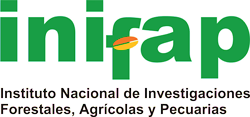Interception loss in four scrubland species in Northeastern Mexico
DOI:
https://doi.org/10.29298/rmcf.v9i49.177Keywords:
Canopy storage capacity, stemflow, Tamaulipan thorn scrub, gross precipitation, interception lossAbstract
Rainfall interception from the arboreal mass is the component of the hydrological cycle that is determined by the climatic conditions and the characteristics of vegetation. The aim of this study was to quantify the redistribution of precipitation by means of gross precipitation, throughfall and stemflow, estimating interception losses and canopy storage capacity for four species of thorn scrub in northeastern Mexico. For the measurement of the components of gross precipitation and throughfall, four troughs were used for each species, while for the quantification of stemflow hoses adhered in stem were used. The analysis of 47 rainfall events distributed between September 23th, 2016 to October 1st, 2017, added a total of 488.9 mm of gross precipitation. The results for Acacia farnesiana, Condalia hookeri, Leucaena leucocephala and Casimiroa greggii for throughfall showed values of 77, 76, 86 and 83 %, respectively; while the component of the stemflow oscillated from 1.12 % for C. hookeri to 1.73 % for A. farnesiana. Linear regression analyzes between gross precipitation and interception loss for four species, showed values of 13, 16, 20 and 22 % for L. leucocephala, C. greggii, A. farnesiana and C. hookeri, respectively, key species when taking management decisions on water yield in a basin; thus, the null hypothesis is rejected and it is concluded that interception loss differs among the evaluated species.
Downloads
Published
How to Cite
Issue
Section
License
The authors who publish in Revista Mexicana de Ciencias Forestales accept the following conditions:
In accordance with copyright laws, Revista Mexicana de Ciencias Forestales recognizes and respects the authors’ moral right and ownership of property rights which will be transferred to the journal for dissemination in open access.
All the texts published by Revista Mexicana de Ciencias Forestales –with no exception– are distributed under a Creative Commons License Attribution-NonCommercial 4.0 International (CC BY-NC 4.0), which allows third parties to use the publication as long as the work’s authorship and its first publication in this journal are mentioned
The author(s) can enter into independent and additional contractual agreements for the nonexclusive distribution of the version of the article published in Revista Mexicana de Ciencias Forestales (for example, include it into an institutional repository or publish it in a book) as long as it is clearly and explicitly indicated that the work was published for the first time in Revista Mexicana de Ciencias Forestales.
For all the above, the authors shall send the form of Letter-transfer of Property Rights for the first publication duly filled in and signed by the author(s). This form must be sent as a PDF file to: ciencia.forestal2@inifap.gob.mx
This work is licensed under a Creative Commons Attribution-Noncommercial 4.0 International license.






